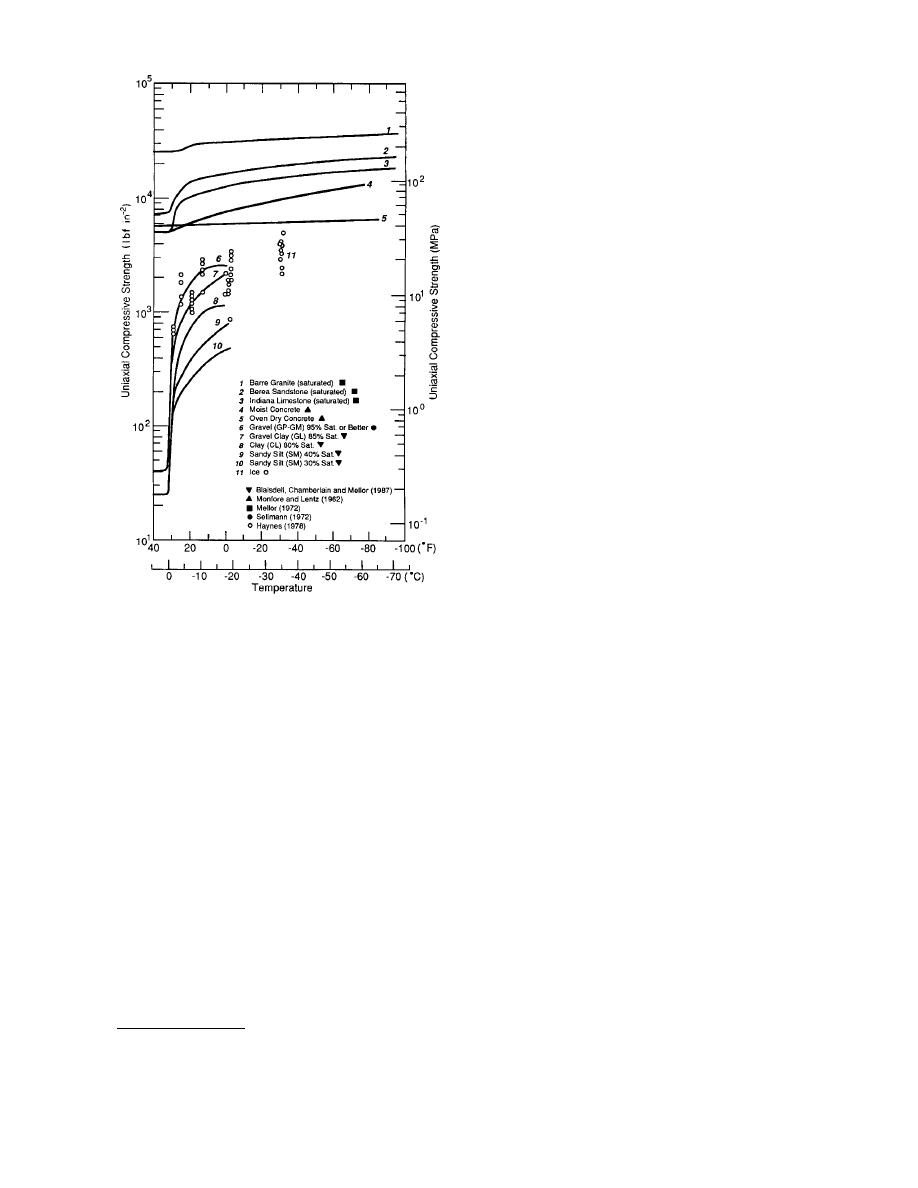
mounted parallelogram ripper on this tractor.
Horizontal force should also be similar when con-
sidering either a front- or rear-mounted tool, both
having similar configurations.
EXCAVATING HARD
AND FROZEN GROUND
A variety of hard ground conditions cause prob-
lems for conventional, unassisted dozers. These
commonly include frozen ground, dense over-
consolidated sediments, weak rock, coral, and
desert caliche. Seasonally frozen ground causes
significant problems because it is very common
and because freezing greatly increases the strength
of the ground surface, often preventing penetra-
tion with conventional tools. Seasonal frost is
widespread in the Northern Hemisphere, and can
be several feet thick. The southern limit of sub-
stantial frost penetration, where frost depth is
about 12 in. (30.5 cm) once in every 10 years, is
shown in Figure 4 (Bates and Bilello 1966); how-
ever, south of this limit seasonal frost can be thick
enough to frequently hinder excavation.
Soil and rock significantly increase in strength
with freezing (Fig. 5), with more than an order of
magnitude increase common for most soils
(Sellmann 1989). The strength of frozen soils con-
tinues to increase with cooling at temperatures
Figure 5. Effect of freezing and subsequent cooling on
normally encountered during winter. Frozen soils'
the unconfined compressive strength of concrete and
strengths can approach those of unfrozen chemi-
earth materials: soil, rock, and ice (from Sellmann
1989).
cally bonded materials, such as weak rock and
concrete. Therefore, excavation problems are
caused by even thin layers of frozen ground.
about 170 to 870 lb (77 to 395 kg). The smallest
Soil strength depends on several factors, in-
model has 11 in. (28 cm) of penetration and, for
cluding moisture content, grain size, and ground
our observations, was attached to the blade of a
temperature. For purposes of excavation, frozen
John Deere 550 dozer.
soils can be grouped into two general categories
Quantitative performance information for
based on their grain size: 1) fine-grained soils that
blade-mounted rippers is not readily available,
include various mixtures of silt, clay, organic ma-
compared to the large background of experience
terial, and ice, and 2) coarse-grained soils consist-
and information on the more common rear-
ing primarily of sand and gravel, with aggregates
mounted rippers. However, if it is assumed that
ranging from small pebbles to large cobbles. Of
dozer blade penetration force and rear-mounted
these the frozen fine-grained soils usually are most
ripper penetration force are similar for most
easily ripped and cut, and tend to be more ductile
crawler tractors, it may then be possible to make
compared to the more brittle and abrasive coarse-
some performance predictions for the less com-
grained material. The high strength and often large
mon blade-mounted attachment. It is interesting
particle size and abrasive nature of the coarse-
to note that data for the D7H indicate that down
grained material make excavation difficult to im-
force on the cutting edge of the dozer blade is
possible for small machines. Machines that can
approximately 21,000 lbf* (93 kN), which is very
generate high tool forces, and have large teeth
close to the penetration force developed for a rear-
compared to aggregate size, have the best chance
of working the coarse material.
* Personal communication with Caterpillar, Inc., 1994.
5



 Previous Page
Previous Page
